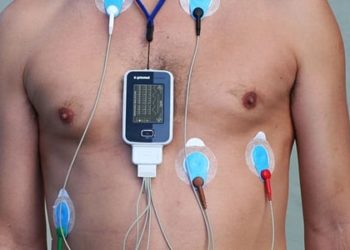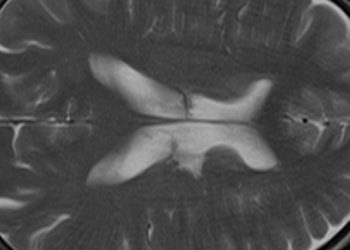Structured protocol adherence linked to improved efficiency and favorable outcomes in stroke at stroke centers
1. Adherence to a structured protocol improved efficiency in time to mechanical thrombectomy for patients with suspected large-vessel occlusion stroke presenting to a primary stroke center, and was associated with favorable outcome.
2. Partial adherence to the assessment protocol was much more common than full adherence to the protocol.
Evidence Rating Level: 3 (Fair)
Study Rundown: With the introduction of mechanical endovascular thrombectomy for ischemic strokes caused by emergent large-vessel occlusion (ELVO), many regional stroke centers are having to augment their triage and assessment protocols to deliver patients in a timely manner to facilities with the necessary expertise. Feasibility of protocol changes need to be evaluated to ensure efficacy in identifying and managing patients in a timely manner. This study sought to evaluate the effectiveness of a new protocol to triage, diagnose, and transfer patients with clinically suspected ELVO in a region with 14 primary stroke centers (PSCs) served by one comprehensive stroke center (CSC) with facilities for endovascular intervention. The study demonstrated that for patients who underwent mechanical thrombectomy, total adherence to the established protocol was associated with reduction in time from arrival to PSC to groin puncture, time from entrance to PSC to transfer out, and improved likelihood of favorable outcome for the patient.
The strength of this study included collection of data in a prospective manner, and that it included clinically relevant outcomes in their analysis. The main limitation of the study included the small sample size, with large numbers of patients not meeting inclusion criteria. Additionally, while the study focused on a large area serving over 1.7 million people, specific geographic differences between locations may complicate the ability to replicate this study’s findings in different centers.
Click to read the study, published in JAMA Neurology
Relevant Reading: A standardized neurointerventional thrombectomy protocol leads to faster recanalization times
In-Depth [retrospective cohort]: This study included prospectively collected data from a single CSC serving 14 PSCs for a population of 1.7 million people. All patients transferred from a PSC to the CSC from July 2015 to May 2016 who underwent mechanical thrombectomy for acute large vessel occlusion were included. Patients were excluded if they underwent clot lysis during transport, had posterior circulation strokes, or were initially inpatients at outside hospitals rather than emergency department presentations. The protocol under investigation had the following components: 1) ED physicians evaluate suspected ELVO patients immediately and contact the CSC if the Los Angeles Motor Scale (LAMS) is greater than 4, 2) The CSC transport team is dispatched prior to any radiographic investigation, 3) CT angiogram is performed after non-contrast CT at the PSC within 30 minutes of arrival, 4) Images are sent to the CSC via secured cloud-based network, and 5) Patients with confirmed ELVO are transported directly to the CSC endovascular suite. A 90-day modified Rankin score (mRS) of 0-2 was considered a favorable outcome.
Of the 101 patients transferred from PSC to CSC, 70 were included in the study. The CSC protocol had full adherence in 22 patients (31.4%) and partial adherence in 48 patients (68.6%). The two groups were similar in demographics, age, NIHSS score, sex, tPA administration, and reperfusion. Patients with fully executed protocol had reduced time from PSC arrival to groin puncture by 40 minutes compared to partially executed protocol (p < 0.001). Time from PSC door-in to door-out was also reduced by 25.5 minutes (p < 0.001). Fully executed protocol was linked to improved chance of favorable outcome compared with partially executed protocol (OR 2.99; 95%CI 1.0 – 8.7).
Image: CC/Wiki
©2017 2 Minute Medicine, Inc. All rights reserved. No works may be reproduced without expressed written consent from 2 Minute Medicine, Inc. Inquire about licensing here. No article should be construed as medical advice and is not intended as such by the authors or by 2 Minute Medicine, Inc.







